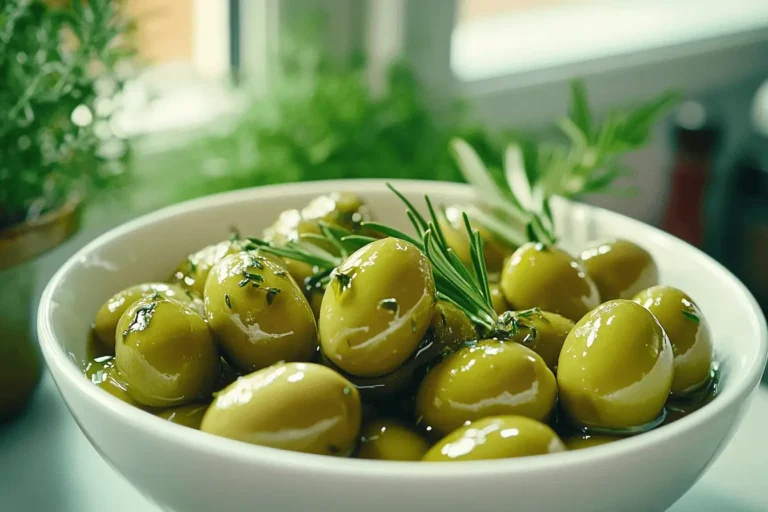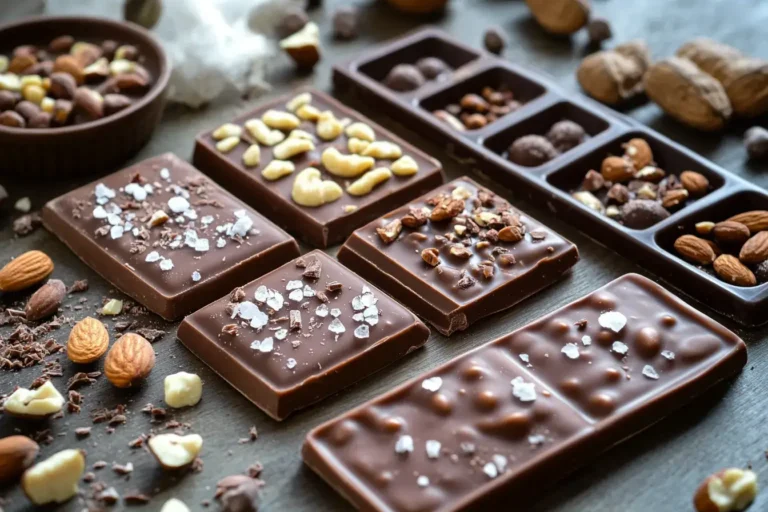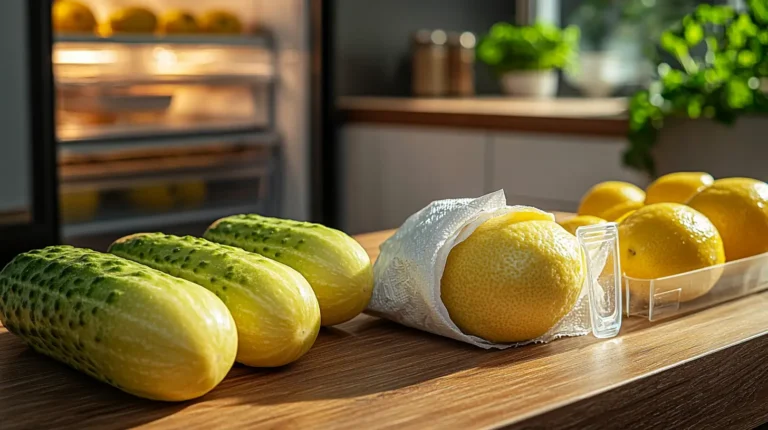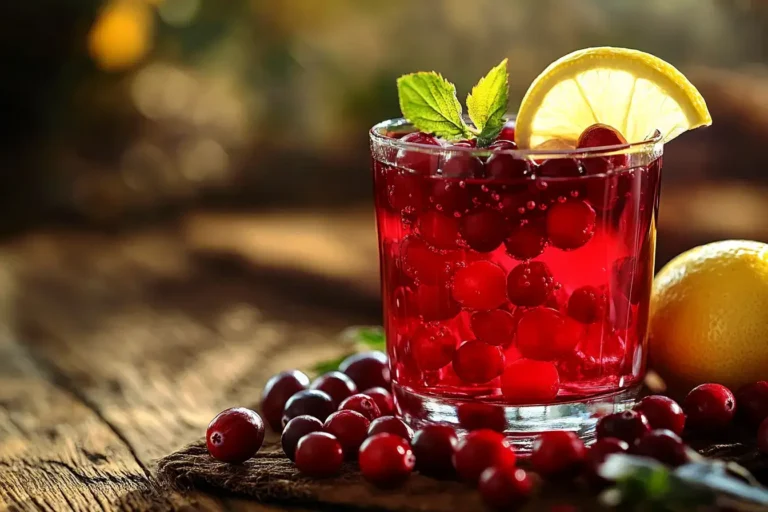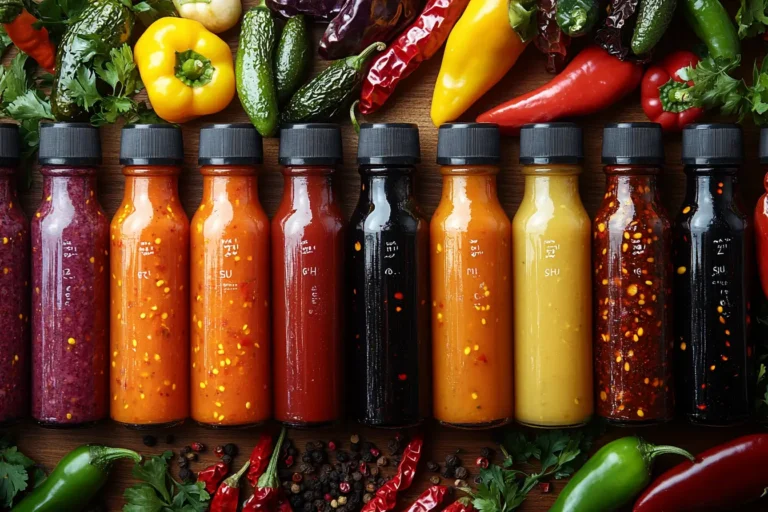Caramelizing Brulee? Easy Tips
Caramelizing brulee? Crème brûlée is a timeless French dessert, celebrated for its silky custard base and signature caramelized sugar topping. However, achieving that perfect golden crust can be tricky if you’re not familiar with the process. If you’ve ever wondered how to caramelize brûlée to get that ideal balance of creamy texture beneath a crisp, sweet top, you’re in the right place. In this guide, we’ll walk you through the exact steps on how to caramelize brûlée like a pro, ensuring your dessert is both visually stunning and irresistibly delicious every time.
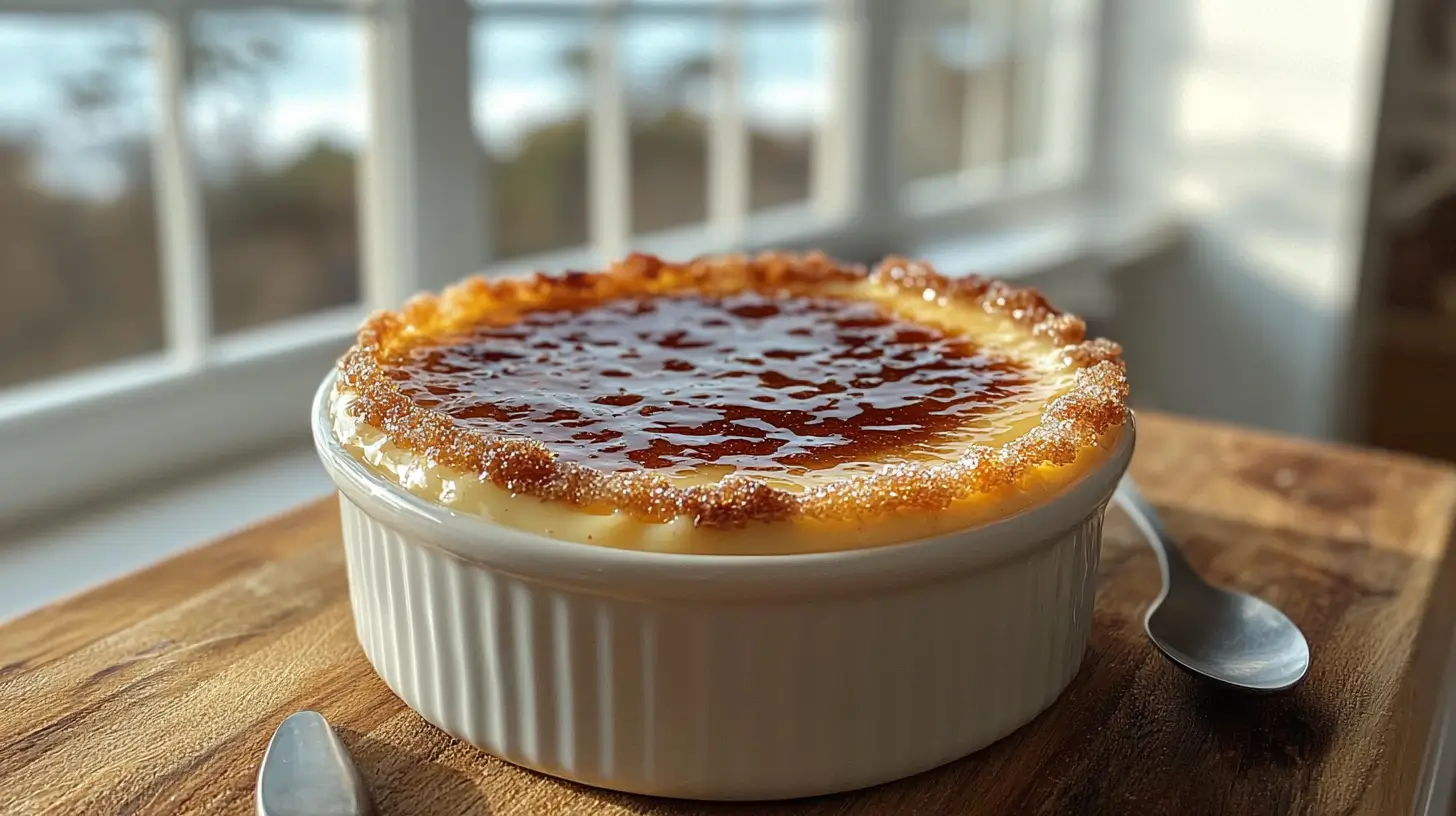
Why Learning How to Caramelize Brulee is Important
Elevate Your Dessert Game with Caramelized Brulee
Understanding how to caramelize brûlée opens up a world of culinary possibilities. The contrast between the smooth custard and the crisp caramelized top is what makes this dessert so unique and enjoyable. Furthermore, perfecting this technique will allow you to create a restaurant-quality dessert in your own kitchen, impressing friends and family alike.
Simple Yet Impressive: The Art of Caramelizing Brulee
Caramelizing brûlée is a simple process that can have a big impact. Despite its simplicity, the technique requires precision and attention to detail. Whether you’re a beginner or a seasoned cook, mastering how to caramelize brûlée can elevate your dessert-making skills, making this classic French treat accessible to everyone.
Ingredients and Substitutes for Caramelizing Brulee
Essential Ingredients for Caramelizing Brulee
To master how to caramelize brûlée, you’ll need the following ingredients:
- Heavy Cream: This forms the base of your custard, giving it richness and body.
- Egg Yolks: They provide the creamy texture and help set the custard.
- Granulated Sugar: Used both in the custard and for caramelizing the top.
- Vanilla Extract or Vanilla Bean: Adds depth and flavor to the custard.
- Salt: A small amount enhances the overall flavor balance.
Substitutes for a Perfect Caramelized Brulee
While traditional ingredients are key to achieving the classic taste, there are a few substitutes that can be used. For example, coconut cream can be a dairy-free alternative to heavy cream, giving the brûlée a subtle coconut flavor. Alternatively, you can use maple sugar instead of granulated sugar to caramelize the top, adding a hint of maple flavor. Finally, for a lighter, dairy-free option, almond milk can replace heavy cream, though the custard will be less rich.
Step-by-Step Instructions to Caramelize Brulee
Preparing the Custard for Caramelizing Brulee
- Preheat Your Oven: Start by preheating your oven to 325°F (160°C). This low temperature ensures that the custard sets evenly.
- Heat the Cream: Next, warm the heavy cream in a saucepan over medium heat until it just begins to simmer. Be careful not to let it boil.
- Infuse with Vanilla: If using a vanilla bean, split it and scrape the seeds into the cream. Let the bean steep in the warm cream for added flavor.
- Whisk Egg Yolks and Sugar: In a separate bowl, whisk the egg yolks with sugar until the mixture becomes pale and thick.
- Combine Cream and Egg Mixture: Slowly pour the warm cream into the egg mixture, whisking constantly to prevent the eggs from cooking. This is a critical step in learning how to caramelize brûlée.
- Strain the Mixture: After combining, strain the mixture through a fine sieve to remove any cooked egg bits or vanilla bean pieces, ensuring a smooth custard.
- Pour into Ramekins: Finally, divide the mixture into ramekins, filling each about three-quarters full.
Baking and Chilling Before Caramelizing Brulee
- Prepare a Water Bath: Place the ramekins in a baking dish and fill the dish with hot water until it reaches halfway up the sides of the ramekins. This water bath method helps cook the custard gently and evenly.
- Bake the Custard: Bake in the preheated oven for 40-45 minutes, or until the custards are set but still slightly jiggly in the center.
- Cool and Refrigerate: Once baked, remove the ramekins from the water bath and let them cool to room temperature. Then, refrigerate them for at least 2 hours or overnight. This chilling process is essential before you learn how to caramelize brûlée.
How to Caramelize Brulee for That Perfect Crunch
- Sprinkle Sugar Evenly: Once the custards are fully chilled, sprinkle an even layer of sugar (about 1-2 teaspoons) over each custard.
- Caramelize with a Torch: Using a culinary torch, carefully melt the sugar by moving the flame in a circular motion until the sugar bubbles and turns a deep golden color. This is the key step in mastering how to caramelize brûlée.
- Cool Slightly: Finally, allow the caramelized sugar to cool and harden before serving, ensuring that satisfying crack when you break into it.
Tips and Tricks for Caramelizing Brulee
Key Techniques for Caramelizing Brulee
- Choose the Right Sugar: For the best results, use fine granulated sugar as it caramelizes more evenly.
- Even Distribution: Additionally, ensure the sugar is spread evenly across the custard’s surface for uniform caramelization.
- Control Your Torch: Keep the torch moving to prevent burning and achieve a consistent golden-brown color.
Make-Ahead Tips to Caramelize Brulee
- Prep Ahead: The custard can be made and refrigerated up to two days in advance, with the caramelizing step done just before serving.
- Storing Leftovers: While crème brûlée is best enjoyed fresh, leftovers can be stored in the refrigerator. Although the caramelized top will lose its crispness, it can be revived by torching again briefly.
Flavor Variations to Caramelize Brulee
Creative Flavors for Caramelizing Brulee
- Espresso Brulee: For a coffee-flavored twist, add a shot of espresso to the custard mixture.
- Citrus Brulee: Alternatively, incorporate lemon or orange zest into the custard for a refreshing citrus note.
- Chocolate Brulee: Melt some dark chocolate into the cream before mixing it with the egg yolks for a rich chocolate brûlée.
Dietary Adjustments for Caramelizing Brulee
- Vegan Brulee: Use coconut cream and a thickening agent like agar-agar instead of eggs to create a vegan version.
- Low-Carb Brulee: Substitute granulated sugar with a low-carb sweetener like erythritol for both the custard and caramelizing the top.
Serving Suggestions for Your Caramelized Brulee
Best Pairings for Caramelizing Brulee
- Fresh Berries: Serve with a side of fresh berries for a tart contrast to the sweet brûlée.
- Shortbread Cookies: A buttery cookie complements the rich custard perfectly.
- Sparkling Wine: Pair with a light, sparkling wine like Prosecco to balance the richness.
Presentation Ideas to Caramelize Brulee
- Classic Look: Serve in wide, shallow ramekins for a classic look that maximizes the caramelized surface area.
- Garnishes: Top with a sprig of mint or a sprinkle of edible gold leaf for an elegant finish.
Nutritional Information for Caramelized Brulee
Crème brûlée is an indulgent dessert, but it’s important to know what you’re consuming.
| Nutrient | Per Serving |
|---|---|
| Calories | 300-350 kcal |
| Fat | 25-30g |
| Carbohydrates | 20-25g |
| Protein | 4-6g |
| Sugar | 15-20g |
| Sodium | 40-60mg |
Health Benefits of Caramelized Brulee
- High in Protein: The egg yolks provide a good source of protein, necessary for muscle repair.
- Rich in Calcium: The heavy cream and eggs contribute to your daily calcium intake, supporting bone health.
The Origins of Caramelizing Brulee
History and Cultural Significance of Caramelized Brulee
The exact origins of crème brûlée are debated, with both France and England laying claim to this luxurious dessert. While the French name translates to “burnt cream,” similar desserts have existed across Europe for centuries, each with its unique twist on caramelizing the top.
Cultural Variations of Caramelizing Brulee
- Crème Catalana: In Spain, a similar dessert known as crème catalana uses milk instead of cream and is flavored with cinnamon and citrus.
- Trinity Cream: In England, Trinity College Cambridge has a long-standing tradition of serving this dessert, branding the caramelized top with the college crest.
Ingredient Spotlight: Sugar for Caramelizing Brulee
Choosing the Right Sugar for Caramelizing Brulee
Sugar is the star ingredient when it comes to how to caramelize brûlée. The type of sugar you use can affect the texture and flavor of the caramelized top.
- Granulated Sugar: The most commonly used sugar for caramelizing brûlée, offering a balanced sweetness and crispness.
- Turbinado Sugar: This less refined sugar provides a deeper, more complex flavor with a slightly thicker crust.
- Brown Sugar: Adds a molasses-like depth to the caramel, though it can burn more quickly than white sugar.
Sourcing the Best Sugar for Caramelizing Brulee
For the best caramelization, opt for high-quality, organic sugar. It not only caramelizes beautifully but also adds a purer sweetness to the dessert.
Essential Cooking Equipment for Caramelizing Brulee
Must-Have Tools for Caramelizing Brulee
- Culinary Torch: This handheld tool is essential for achieving the perfect caramelized crust. It offers precision and control, allowing you to evenly caramelize the sugar without burning it.
- Ramekins: Use wide, shallow ramekins to maximize the caramelized surface area.
- Fine Mesh Sieve: Ensures a smooth custard by straining out any egg solids or impurities.
Alternative Tools for Caramelizing Brulee
- Broiler Method: If you don’t have a torch, you can caramelize the sugar under the broiler. Be sure to keep a close eye on the custards to prevent burning.
- Small Saucepan: For those without a torch, you can also melt sugar in a saucepan and pour it over the custard, though this method requires careful timing.
Seasonal Adaptations for Caramelizing Brulee
Adapting Brulee for Different Seasons
Crème brûlée can be adapted to feature seasonal flavors, making it a versatile dessert for any time of year. For example:
- Spring: Infuse the cream with fresh herbs like lavender or rosemary for a floral note.
- Summer: Use fresh berries or tropical fruits to add a light, refreshing contrast.
- Fall: Incorporate spices like cinnamon, nutmeg, or pumpkin puree for a warming, autumnal twist.
- Winter: Add a splash of liquor, such as brandy or bourbon, to the custard for a cozy, holiday-inspired brûlée.
Holiday Variations for Caramelizing Brulee
- Valentine’s Day: Infuse the custard with rose water and serve with a side of chocolate-covered strawberries for a romantic dessert.
- Christmas: Incorporate peppermint or gingerbread spices into the custard for a festive take on the classic brûlée.
Storage and Reheating Tips for Caramelizing Brulee
How to Store and Reheat Brulee
Crème brûlée is best served fresh, but it can be stored and reheated with a few considerations.
- Refrigeration: Store the custards in the refrigerator, covered with plastic wrap, for up to 3 days before caramelizing the sugar.
- Freezing: While not typically recommended, you can freeze the custard base (without the sugar topping) for up to 1 month. Thaw in the refrigerator before caramelizing.
Reheating Tips for Caramelizing Brulee
- Torching: If the caramelized top softens in the fridge, a quick re-torching can revive the crispness before serving.
Frequently Asked Questions (FAQs) About Caramelizing Brulee
1. Can I caramelize brûlée without a torch?
Yes, you can use your oven’s broiler to caramelize the sugar. Place the custards close to the broiler and watch carefully to avoid burning.
2. What’s the best sugar to use for caramelizing?
Fine granulated sugar is ideal as it melts evenly, creating a smooth, crisp caramelized top. Avoid powdered sugar, as it can burn too quickly.
3. Do You Have to Use Ramekins for Crème Brûlée?
No, you don’t have to use ramekins for crème brûlée, but they are ideal because their shallow, wide shape allows for even cooking and maximizes the caramelized sugar topping. If you don’t have ramekins, you can use other heatproof dishes, like small glass jars or ceramic bowls, but the cooking time may vary depending on the depth and size.
4. How can I prevent my custard from curdling?
To avoid curdling, ensure your cream is not too hot when combining it with the egg mixture, and bake the custards in a water bath at a low temperature.
5. What Is Crème Brûlée Made Of?
Crème brûlée is made of a rich custard base, typically consisting of heavy cream, egg yolks, sugar, and vanilla, topped with a layer of caramelized sugar.
Budget-Friendly Tips for Caramelizing Brulee
Saving Money on Brulee Ingredients
- Use Store-Bought Sugar: Regular granulated sugar works perfectly fine for caramelizing, so there’s no need to buy specialty sugars unless desired.
- Buy in Bulk: Purchase cream and eggs in bulk if you plan to make this dessert often, as it can help reduce costs.
Cost per Serving of Caramelized Brulee
Making crème brûlée at home costs significantly less than ordering it at a restaurant. Depending on the ingredients used, each serving can be made for approximately $1-$2.
Sustainability and Eco-Friendly Tips for Caramelizing Brulee
Eco-Friendly Sourcing for Caramelizing Brulee
- Opt for Organic: Choose organic cream and sugar to support sustainable farming practices.
- Buy Local: Whenever possible, source your dairy and eggs from local producers to reduce your carbon footprint.
Reducing Waste When Caramelizing Brulee
- Use Leftover Ingredients: If you have extra egg whites, consider making meringues or an egg-white omelet.
- Compost Scraps: Eggshells and vanilla bean pods can be composted, reducing kitchen waste.
Kid-Friendly Adaptations for Caramelizing Brulee
Making Brulee Fun for Kids
- Less Sugar: Reduce the amount of sugar in the custard for a less sweet, more kid-friendly version.
- Fun Shapes: Use cookie cutters to create fun shapes with the caramelized top, making the dessert more appealing to children.
Presentation Ideas for Kids’ Caramelizing Brulee
- Colorful Toppings: Let kids decorate their brûlée with sprinkles or edible glitter after caramelizing.
- Mini Portions: Serve smaller portions in ramekins to make it more manageable for young eaters.
Recipe Scaling for Caramelizing Brulee
Scaling Up or Down
- Large Batches: To serve a crowd, simply double or triple the recipe, making sure to use enough ramekins and a larger baking dish for the water bath.
- Small Batches: For smaller groups, halve the recipe while maintaining the same method.
Meal Prep and Batch Cooking for Caramelizing Brulee
- Batch Cooking: Prepare the custard in advance and refrigerate until ready to caramelize. This makes it easy to serve a gourmet dessert on short notice.
Conclusion: Mastering the Art of Caramelizing Brulee
Learning how to caramelize brûlée is a skill that can elevate your dessert game, allowing you to create a classic French treat with a professional touch. By following the steps outlined in this guide, you’ll be able to achieve that perfect, crackling sugar top every time. Whether you’re making crème brûlée for a special occasion or just as a treat for yourself, mastering this technique will ensure your dessert is both visually stunning and delicious.
We hope this guide has provided you with all the tools and tips needed to succeed. If you give this recipe a try, we’d love to hear how it turned out! Share your experience in the comments below, and don’t forget to follow our blog for more culinary tips and recipes. Happy caramelizing!


